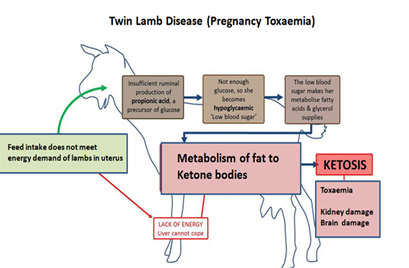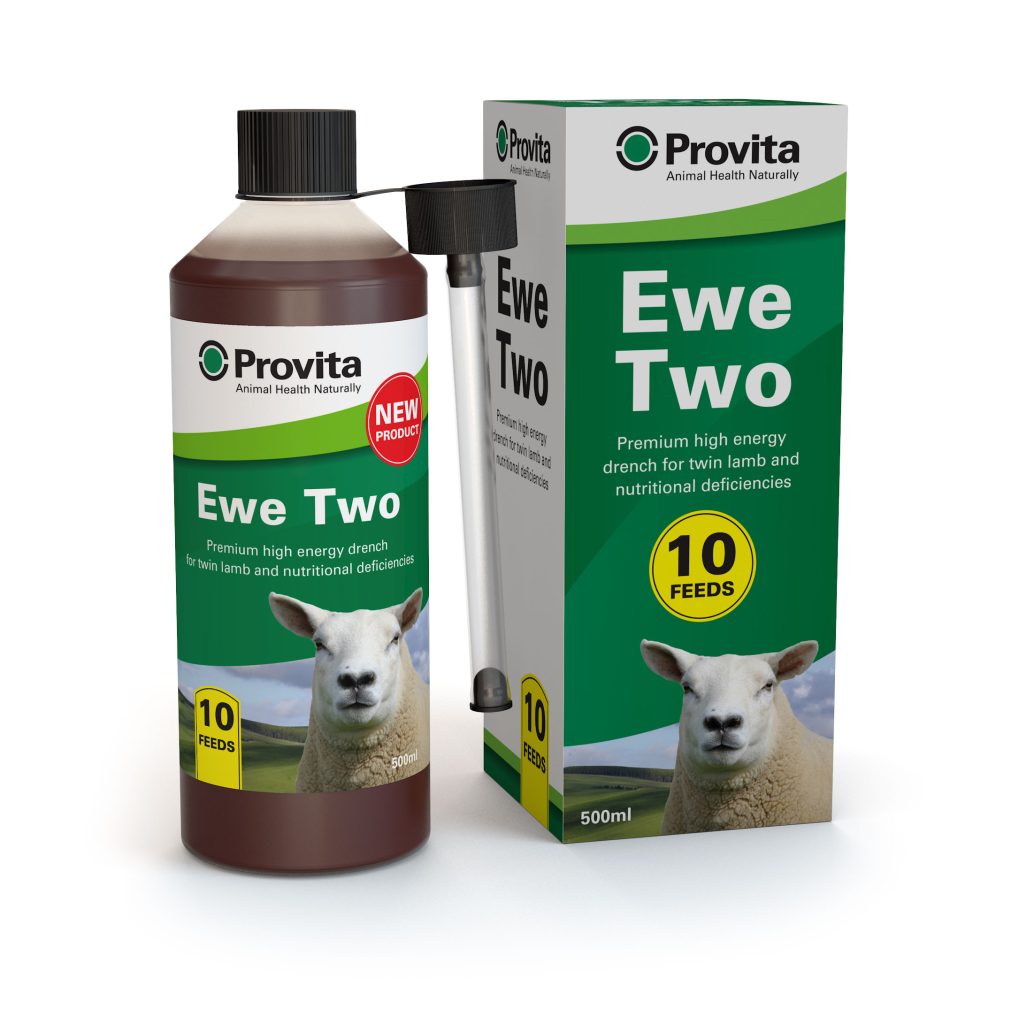Written by Dr T.B Barragry
In the pregnant ewe, 75% of foetal growth occurs in the final 6-7 weeks before lambing. This rapid growth of the foetus increases the ewe’s need for nutrients, and hence daily requirements can no longer be met by a forage-based diet alone. Ewes must be correctly fed in late pregnancy in order to provide for the growing foetus and to ensure the ewe herself is prepared for the lactation period.
Supplementation will frequently be needed. In late pregnancy, nutrients are required for the growing foetus (or foetuses), ewe maintenance, udder development and the build- up of colostrum.
Nutrient requirements increase by around 50% in ewes carrying a single, and 70% in ewes carrying twins during late pregnancy. The nutritional plane during late pregnancy (day 90-145) can influence, lamb birth weight and viability, colostrum quality and supply, lambing difficulty, mothering ability, ewe mortality and subsequent lamb health, viability, and growth rates.
Hypocalcaemia
This refers to a sudden drop in the levels of blood calcium in the ewe. Milk fever is caused by a calcium deficiency in the bloodstream, usually occurring in the last 6 weeks of pregnancy and the first 3 months of lactation when calcium needs are the highest. Ewes could already be prone to a calcium deficiency due to a lack of calcium in the diet.
The ewe is the primary source of calcium for the lamb in utero and also for the newborn lamb. Huge demands are made on the calcium reserves of the ewe to provide not only for foetal bone growth but also the supply of calcium -rich colostrum and milk to the suckling lamb. Clearly such demand will be higher where there is twin or triplet lambs. Parturient paresis in pregnant and lactating ewes is a disturbance of calcium metabolism characterized by rapid development of hyperexcitability and ataxia, progressing to depression, recumbency, coma, and death.

Pregnancy Toxaemia (Twin Lamb Disease/TLD)
Twin Lamb Disease (TLD) is also called Pregnancy Toxaemia and it is more common in twin and triplet bearing ewes who have high energy demands during the last month of gestation.
Twin Lamb Disease is a metabolic disease that occurs when the ewe is no longer receiving enough nutrition and energy intake (glucose) to provide for herself and also for her lambs in utero, and hence her blood glucose drops sharply. The disease can occur in thin or over fat ewes and is triggered by a stressful event such as a change in weather, change in diet or foot problems which results in a critical shortage of blood glucose causing a demand on the ewe using her backfat for energy. This fat travels to the liver to be processed into energy but if excessive amounts are mobilised, the liver begins to metabolise this fat into ketone bodies and soon a toxic state ensues. This is a state of ketosis which cause brain and kidney damage.
Twin Lamb Disease can be triggered by several factors aside from lack of food. Thin and fat ewes are more likely to develop TLD. Ewes who are lame or ill may not be able to graze effectively or stand at hay/silage feeders long enough to feed. Twin and triplet bearing ewes may not be able to eat adequately due to a lack of room for their gut caused by the increased size of their developing lambs. Bad weather can prevent ewes from accessing the feed. The early clinical signs of ovine pregnancy toxaemia include disorientation, leading to isolation from the remainder of the flock. Over the next 24 to 48 hours affected ewes become increasingly dull and depressed and are easily caught because they are blind. Head pressing into the corner of a pen is a common finding. Continuous fine muscle tremors may be observed around the muzzle and affecting the ears. Ewes often become recumbent with the hind legs held out behind the ewe. Treatment with energy sources, glucose, and propylene glycol, can be successful in many ewes which are still able to walk when treatments commence.

Ewe Two from Provita is specially formulated to prevent or treat twin lamb disease. It contains high levels of glucose and energy and also the glucose precursor propylene glycol. Ewes displaying early symptoms of TLD should be treated with a fast acting glucose energy drench ( e.g. propylene glycol) such as Ewe Two (Provita) to increase their blood glucose levels quickly, and this can be repeated in 6 or 24 hours. Propylene Glycol is a rapidly acting source of glucose which enters into the pyruvate cycle and quickly generates glucose production. Oral administration of propylene glycol (PG) increases insulin by 200–400% within 30 min after drenching, indicating that PG is absorbed very quickly from the rumen. This Ewe Two product also contains 24 highly beneficial minerals and vitamins. (Selenium, Vit. E, Vit. B 12, Cobalt, Iodine, Iron, B vitamins, calcium copper, zinc, manganese, methionine folic acid.). The B vitamins in particular assist in correcting liver metabolism and in assisting in the elimination of the ketone bodies. Calcium is included which will also help to keep vital calcium levels at optimum concentrations in the ewe, thus contributing to a lessening of the risk of hypocalcaemia occurring.